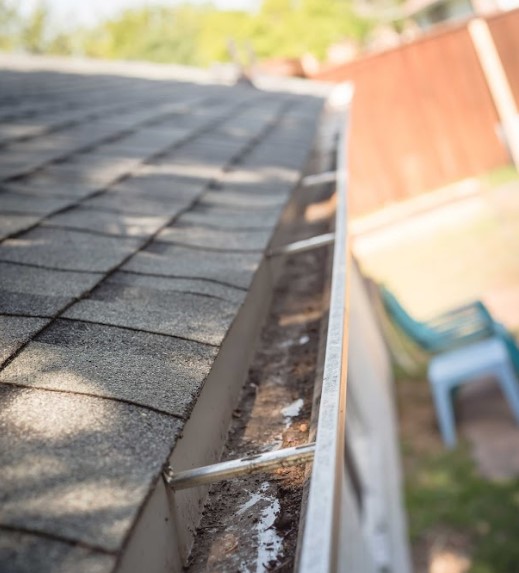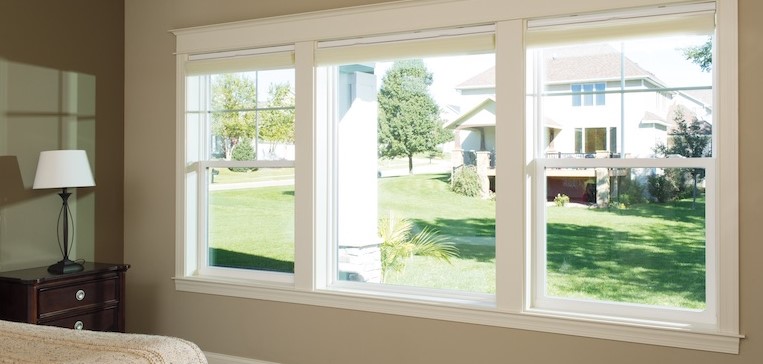The Ultimate Roof & Gutter Combo: Protecting Your Home from Tropical Storm Flooding
October 20, 2025
•
Written By
ProRoofUSA

When tropical storm season hits Florida, the rain doesn’t ask permission—it just keeps coming. For homeowners, it’s not just the downpour itself that causes problems, but where that water goes once it hits your roof. Without a strong roof and gutter system working together, even a short-lived storm can lead to leaks, foundation cracks, and costly water damage.
The roof may take center stage in protecting your home, but gutters are the unsung heroes that keep water moving safely away. When both systems perform in harmony, you get the ultimate shield against Florida’s heavy rains and flash floods.
In this guide, we’ll walk you through why the roof-and-gutter combo is your best defense against tropical storm flooding, how to spot early warning signs, and when to call in the experts at ProRoofUSA in Loxahatchee, FL for help.
Key Takeaways
- Your roof and gutters work together to keep water from pooling, leaking, or damaging your home’s structure.
- Clogged or damaged gutters can undermine even the strongest roof.
- Regular inspections and maintenance help prevent costly storm-related repairs.
- Upgrading to storm-ready materials can make your home more resilient in hurricane-prone regions.
- ProRoofUSA in Loxahatchee, FL offers expert roof and gutter solutions designed for Florida weather.
Why Florida Homes Need a Powerful Roof and Gutter System
If you live in Florida, you already know how quickly a sunny morning can turn into a flood warning by evening. During tropical storm season, the sheer amount of rainwater that hits your home can be staggering—thousands of gallons can pour off your roof in a single storm.
A solid roofing system keeps that water out. Gutters and downspouts make sure it has somewhere to go. Without proper drainage, that water will find its own path—and it usually ends up where you least want it: in your attic, walls, or foundation.
A well-maintained roof-and-gutter setup acts like a coordinated defense team: the roof blocks, and the gutters redirect. Together, they keep your home dry, stable, and ready for whatever the next storm brings.
How Gutters and Roofs Work Together to Prevent Flooding
Here’s the breakdown:
- The Roof: Your first line of defense. It catches and channels rainfall down its slopes.
- The Gutters: Installed along roof edges, they collect runoff and move it through downspouts.
- The Downspouts: Direct water safely away from your foundation or landscaping.
If any part of this system fails—say, a cracked shingle or a clogged downspout—rainwater will pool in unwanted places, causing leaks, wood rot, or even structural shifting in your home’s foundation.
The key is keeping both systems clean, clear, and ready for action before the next storm rolls through.
Common Roof and Gutter Problems During Storm Season
Florida’s climate is as beautiful as it is brutal. High winds, heavy rain, and airborne debris can quickly wreak havoc on your home’s protective layers. Here’s what often goes wrong:
- Clogged gutters: Leaves, twigs, and roof granules block water flow, forcing it to back up under shingles.
- Loose shingles or flashing: Wind-lifted edges allow rain to seep into your roof deck.
- Sagging gutters: Weight from debris and water causes detachment from fascia boards.
- Cracked downspouts: Water spills near your foundation instead of being directed away.
- Insufficient slope or design: Poor gutter angles prevent water from draining effectively.
Each of these issues might seem small on its own—but together, they can spell disaster during a tropical storm.
Simple Steps to Protect Your Roof and Gutters Before the Next Storm
You can’t control the weather, but you can control your home’s readiness. These maintenance steps go a long way toward stormproofing your property:
- Clean gutters and downspouts at least twice a year. Remove leaves, branches, and other debris that restrict water flow.
- Inspect flashing, seals, and joints. Look for cracks or corrosion around vents, chimneys, and valleys.
- Check attic insulation and ventilation. Proper airflow prevents heat and humidity buildup, which can weaken roof materials.
- Trim back overhanging branches. Reduce the chance of debris clogging gutters or damaging shingles during high winds.
- Install gutter guards. These keep debris out while still allowing rainwater to flow freely.
- Schedule professional roof inspections. A licensed roofer can identify damage that’s invisible from the ground.
By catching small issues early, you avoid expensive repairs—and gain peace of mind every time the weather turns rough.

The Power of Proper Drainage: Keeping Water Away from Your Foundation
Gutters aren’t just about keeping rain off your porch—they’re about keeping your entire structure safe. When rainwater collects near your home’s base, it slowly seeps into the soil, putting pressure on your foundation walls. Over time, this can cause cracks, shifting, and even basement flooding.
Well-placed downspouts and splash blocks are your first line of defense. They should extend several feet away from the house, guiding water toward proper drainage areas. If your yard slopes toward your home, consider installing underground drains or French drains to move water even farther away.
It’s all about giving that stormwater somewhere else to go—anywhere but your living room floor.
Upgrading Your Roof and Gutters for Florida Weather
Not all roofs and gutters are created equal. In hurricane-prone areas like Loxahatchee and the surrounding counties, materials matter more than ever.
Smart Upgrade Options:
- Metal roofing systems: Highly resistant to wind and corrosion, lasting decades with minimal upkeep.
- Seamless gutters: Custom-fitted on-site, reducing leak risks at joints.
- Heavy-gauge aluminum or copper gutters: Designed to handle heavy rainfall without bending or warping.
- Leaf guards and mesh covers: Keep debris out while maximizing water flow during downpours.
- Water diverters and splash guards: Prevent overflow in high-volume drainage areas.
An investment in better materials today means fewer repairs and headaches tomorrow.
Frequently Asked Questions
Do I need gutters if I already have a sloped roof?
Yes. Even steep roofs can’t handle torrential rain alone. Gutters direct that water away from your home’s walls and foundation, preventing long-term water damage.
How often should I clean my gutters in Florida?
At least twice a year—once before hurricane season and once after. More often if you have overhanging trees or heavy debris buildup.
What’s the best gutter material for tropical climates?
Aluminum and copper gutters hold up best to Florida’s humidity and salt air. They resist corrosion and can handle heavy rainfall.
Can clogged gutters cause roof leaks?
Absolutely. When gutters back up, water can push under shingles or fascia boards, leading to rot and leaks inside your home.
Should I replace my gutters when I get a new roof?
It’s often a smart move. Replacing both at once ensures a perfect fit and long-lasting storm protection.
Why Professional Roof and Gutter Care Matters
You can handle basic cleaning and visual checks yourself, but professional roofers know where to look for deeper damage. Hidden cracks, separation points, or drainage misalignments can’t always be seen from the ground—and ignoring them can cost you thousands later.
At ProRoofUSA, we specialize in helping Florida homeowners prepare for and recover from tropical storm damage. Our experienced team offers thorough inspections, precision repairs, and custom roof-and-gutter installations designed to withstand heavy rain, wind, and heat.
One System, One Goal—Protection
Your roof and gutters might serve different roles, but together, they make your home storm-ready. Every drop of rain that hits your roof should end up safely away from your foundation—and when both systems are tuned for Florida’s weather, that’s exactly what happens.
Before the next tropical storm rolls through, make sure your home’s first line of defense is in top shape.
Contact ProRoofUSA in Loxahatchee, FL today for a roof and gutter inspection or to learn more about stormproof upgrades that protect your home year-round.
Recent Articles

Residential Window
Upgrade to Impact-Resistant Windows Before Next Hurricane Season
November 26, 2025

Residential Roofing
The Truth About Roof Coatings: Do They Really Extend Roof Life in Florida?
November 19, 2025

Residential Roofing
Metal vs. Tile Roofing: Which Fits Your Florida Home Best?
November 12, 2025

Residential Roofing
How a New Roof Can Help Boost Your Home’s Curb Appeal Before the Holidays
November 5, 2025
